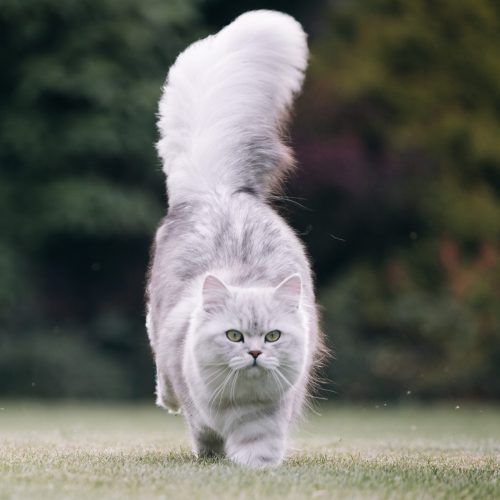We’ve all seen the cartoons—cats and dogs chasing each other, hissing, barking, total chaos. But real life isn’t always like that. In fact, with the right approach, cats and dogs can not only get along—they can become the best of friends.
If you’re thinking about introducing a cat and a dog into the same home, or you’re struggling with tension between your pets, don’t worry. It’s absolutely possible to create a peaceful, even affectionate bond between them. It just takes patience, understanding, and a little strategy.
Here’s what you need to know.
Do Cats and Dogs Naturally Get Along?
Cats and dogs are very different animals. Dogs are usually social, pack-driven, and eager to please. Cats are more solitary, territorial, and independent. Because of these differences, misunderstandings can easily happen—especially at first.
But that doesn’t mean they’re destined to fight. With the right introductions and ongoing support, many cats and dogs learn to coexist—and even cuddle, groom, and play together.
1. Start with the Right Temperament
Not every dog or cat is a good fit for a mixed-pet home. The best chance of success comes from matching personalities, not just species.
Look for:
-
A dog that’s calm, gentle, and not overly prey-driven
-
A cat that’s confident, not fearful or easily stressed
-
Pets with a history of positive interactions with other animals
Avoid:
-
Dogs with high chase instincts or history of aggression toward cats
-
Shy or easily startled cats who might feel threatened
2. Go Slow with Introductions
The biggest mistake new pet owners make? Rushing the process. Your cat and dog shouldn’t be left together unsupervised right away. Instead, follow these steps:
Step 1: Scent Exchange
Let them get used to each other’s smell before they meet. Swap blankets or toys for a few days.
Step 2: Controlled First Meeting
Keep the dog on a leash and let the cat observe from a safe distance (or behind a baby gate). Watch both animals’ body language.
Step 3: Short, Supervised Sessions
Gradually increase time together with supervision. Reward calm, relaxed behavior with praise or treats.
Step 4: Unsupervised Time (Eventually)
Only once both animals are consistently relaxed around each other should you leave them alone in shared spaces.
3. Give Each Pet Their Own Space
Cats especially need high places and quiet zones where they can retreat without being followed. Make sure your home offers:
-
Perches, cat trees, or shelves out of the dog’s reach
-
Separate feeding areas (dogs often steal cat food!)
-
Private litter box access away from the dog
Dogs should also have their own bed or crate where they can relax undisturbed.
4. Use Positive Reinforcement
Whenever your cat and dog behave calmly around each other, reward them. Use treats, gentle petting, or verbal praise. Over time, they’ll learn that being near each other means good things happen.
5. Know the Warning Signs
Always monitor for signs of stress or aggression.
For cats:
-
Flattened ears
-
Tail flicking or puffed up
-
Hissing or growling
-
Hiding or swatting
For dogs:
-
Intense staring or stalking
-
Lunging, barking, or whining
-
Overexcitement that doesn’t settle
-
Ignoring commands
If you see these behaviors, separate the pets and try again later with more distance or barriers.
6. Be Patient
Some cats and dogs become friends in a few days. Others may take weeks—or months. And that’s okay! Every relationship develops at its own pace.
Even if they don’t become cuddle buddies, peaceful coexistence is still a win.
Final Thoughts
Yes, cats and dogs can be best friends—but they need your help to get there. With slow introductions, careful supervision, and lots of positive reinforcement, your home can be a place where whiskers and wagging tails live in harmony.
Give them time, space, and a little love—and you might just witness a beautiful friendship bloom.
